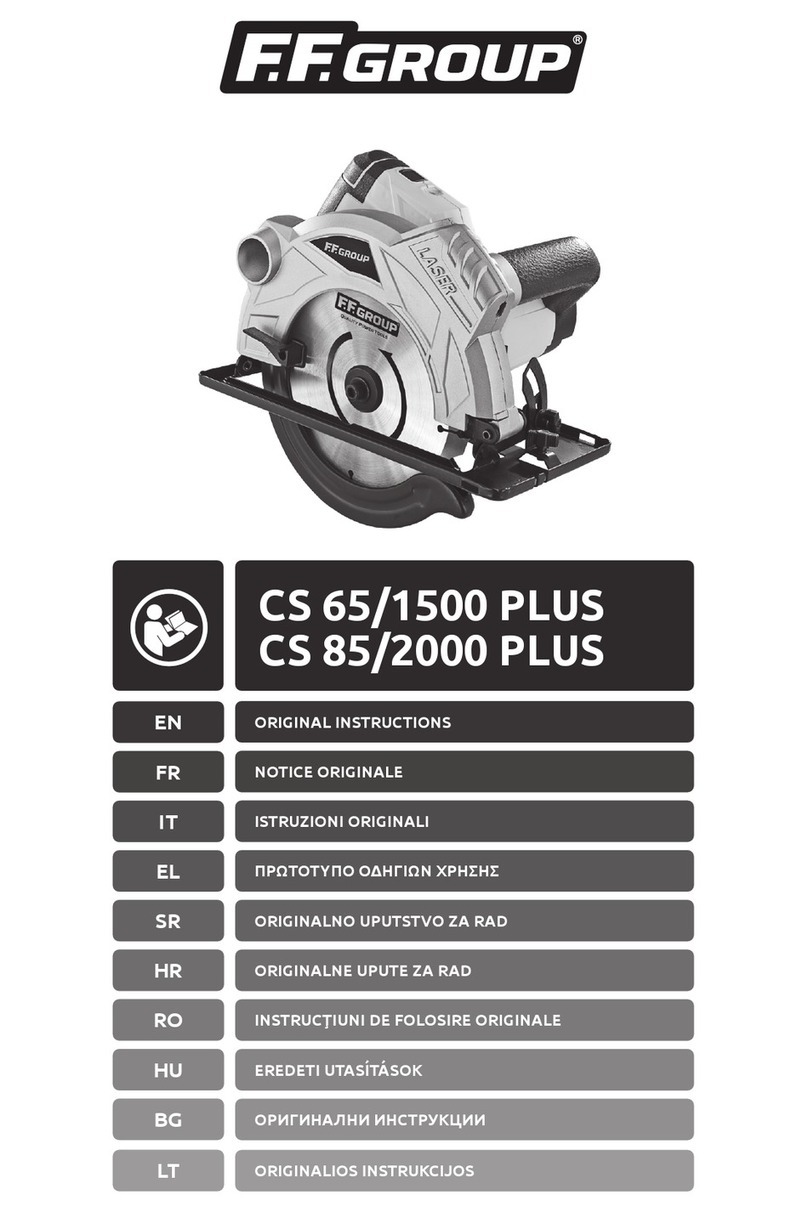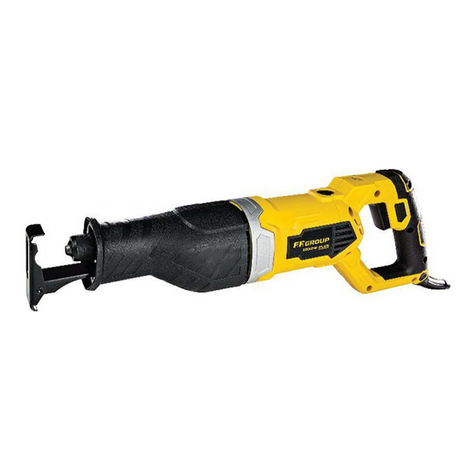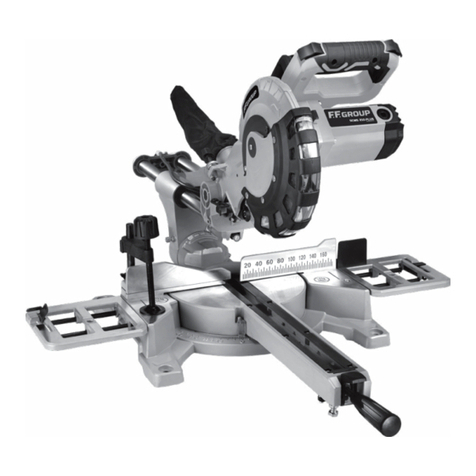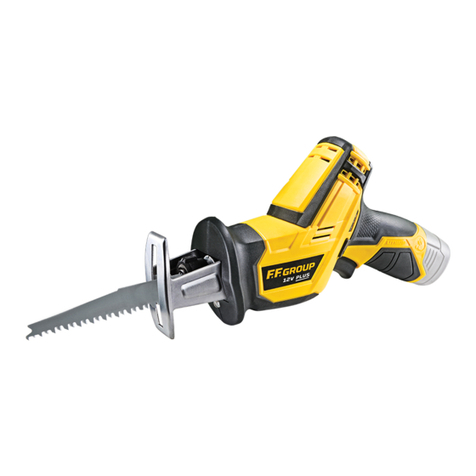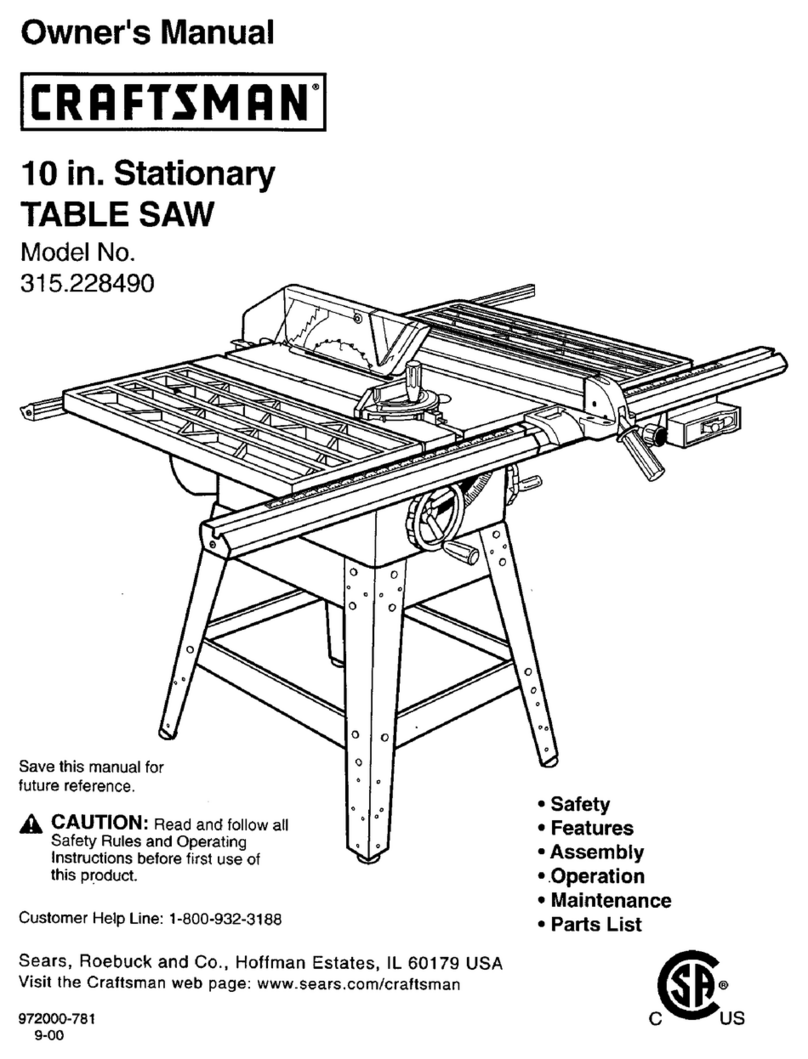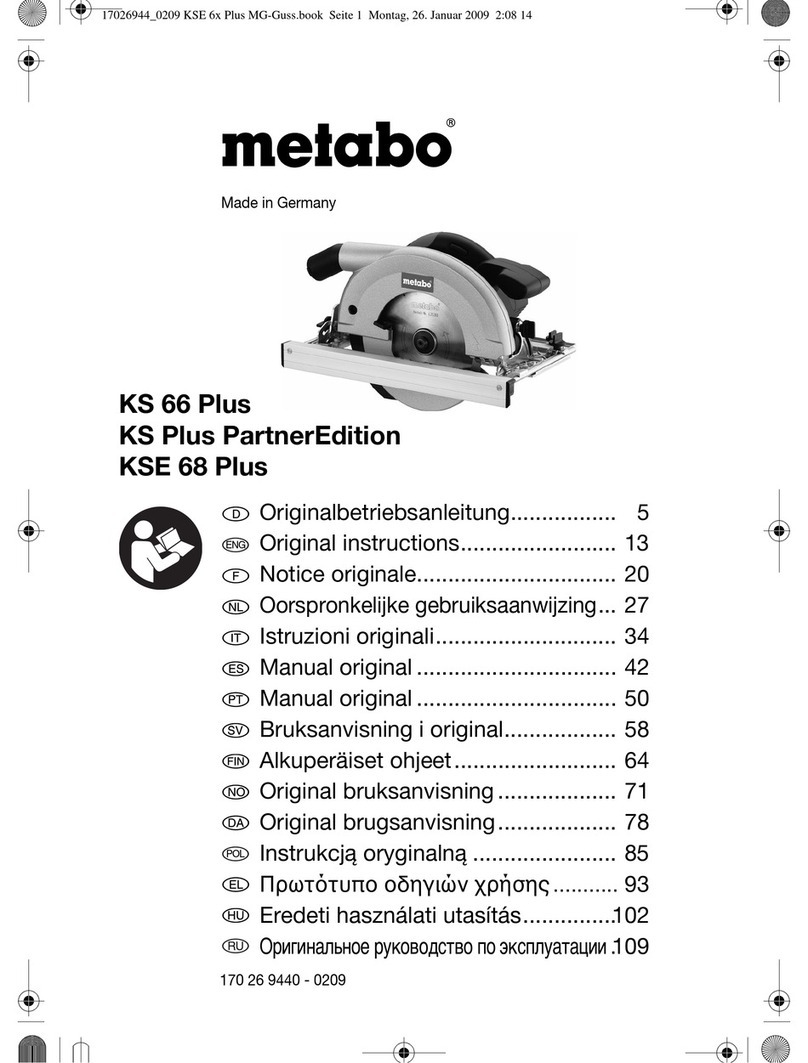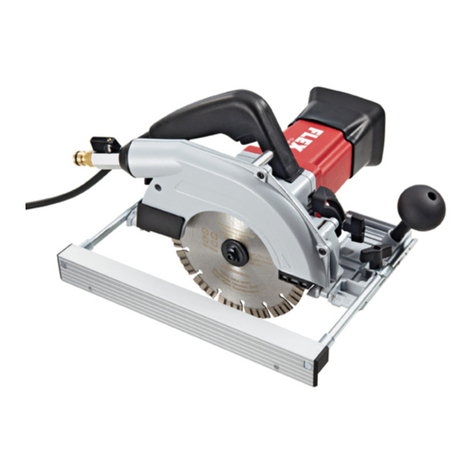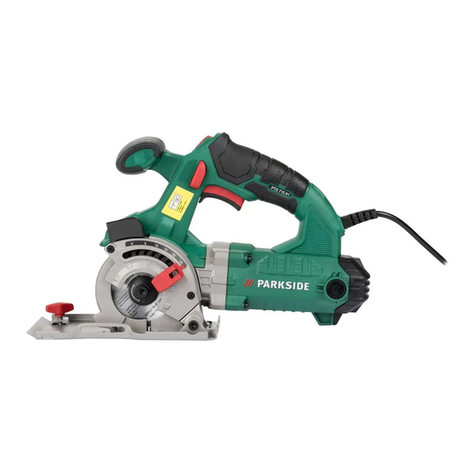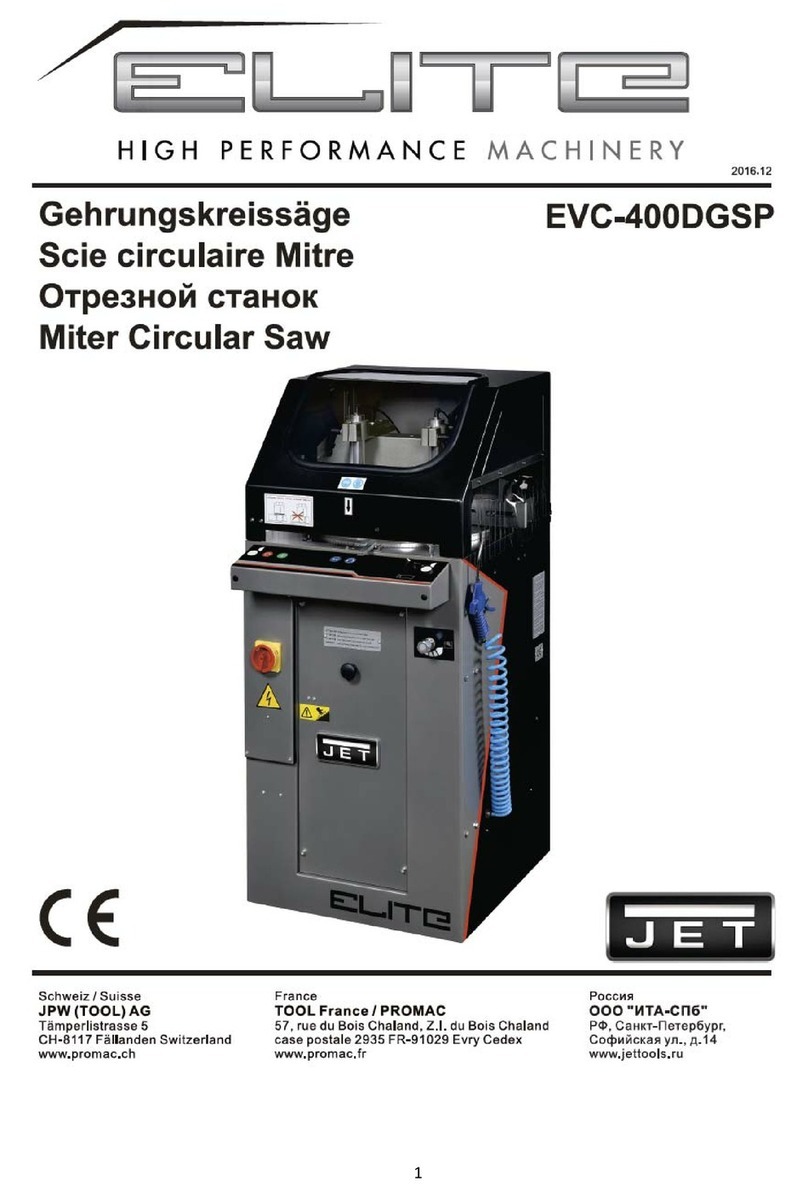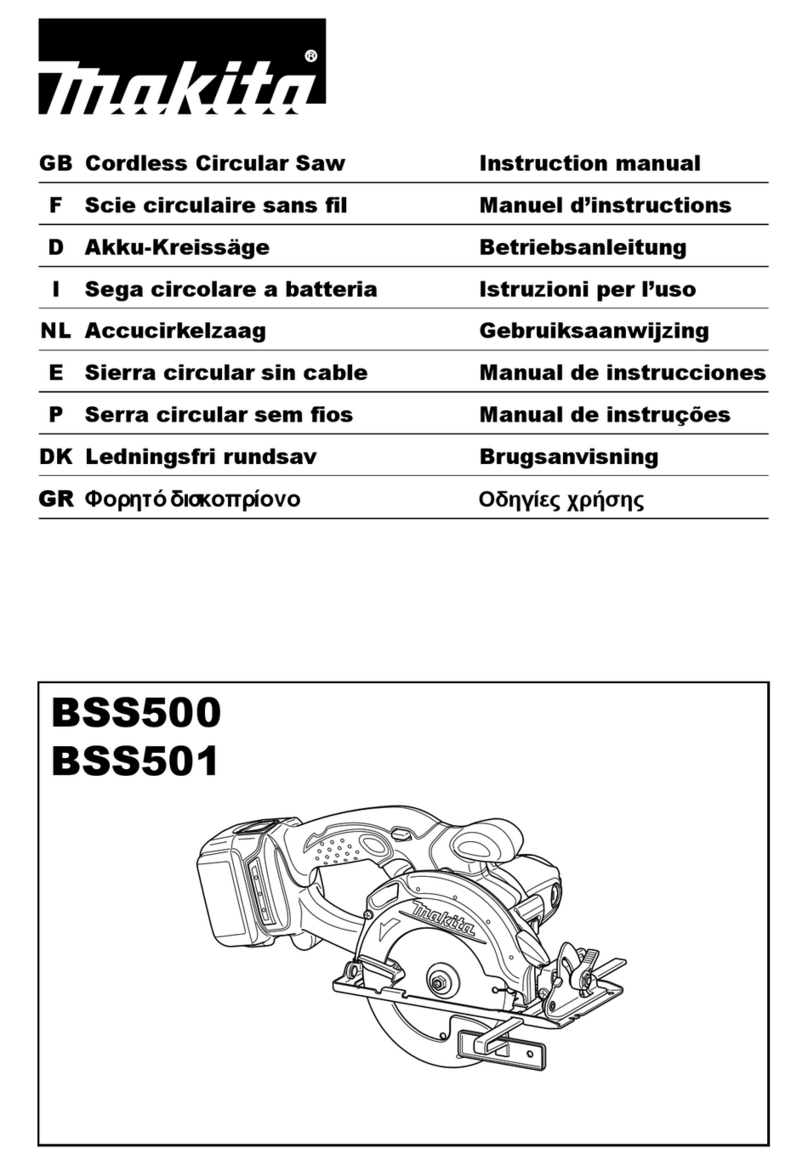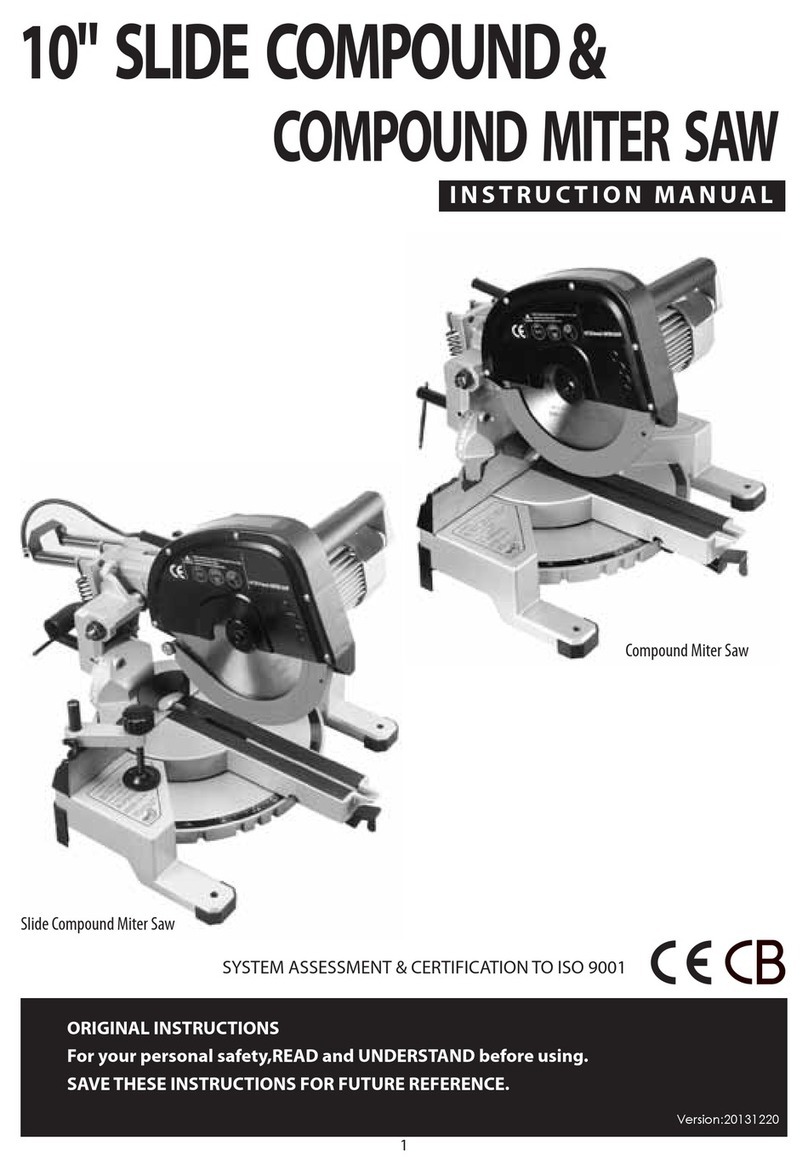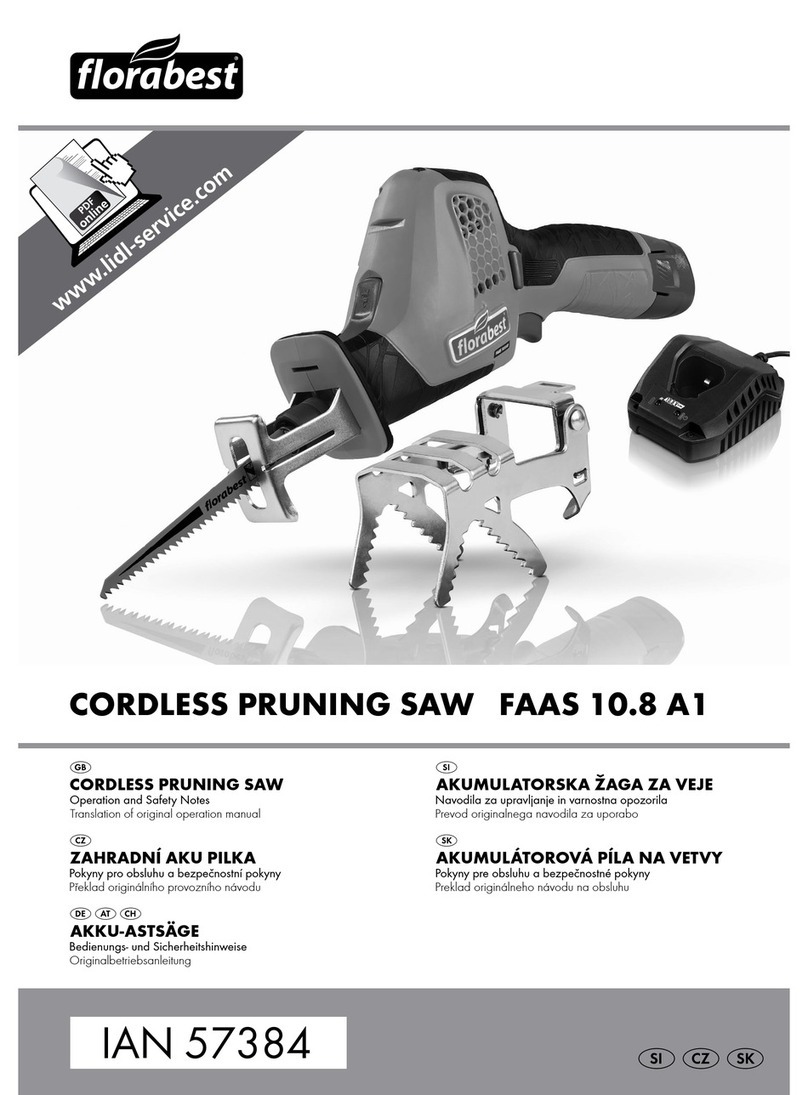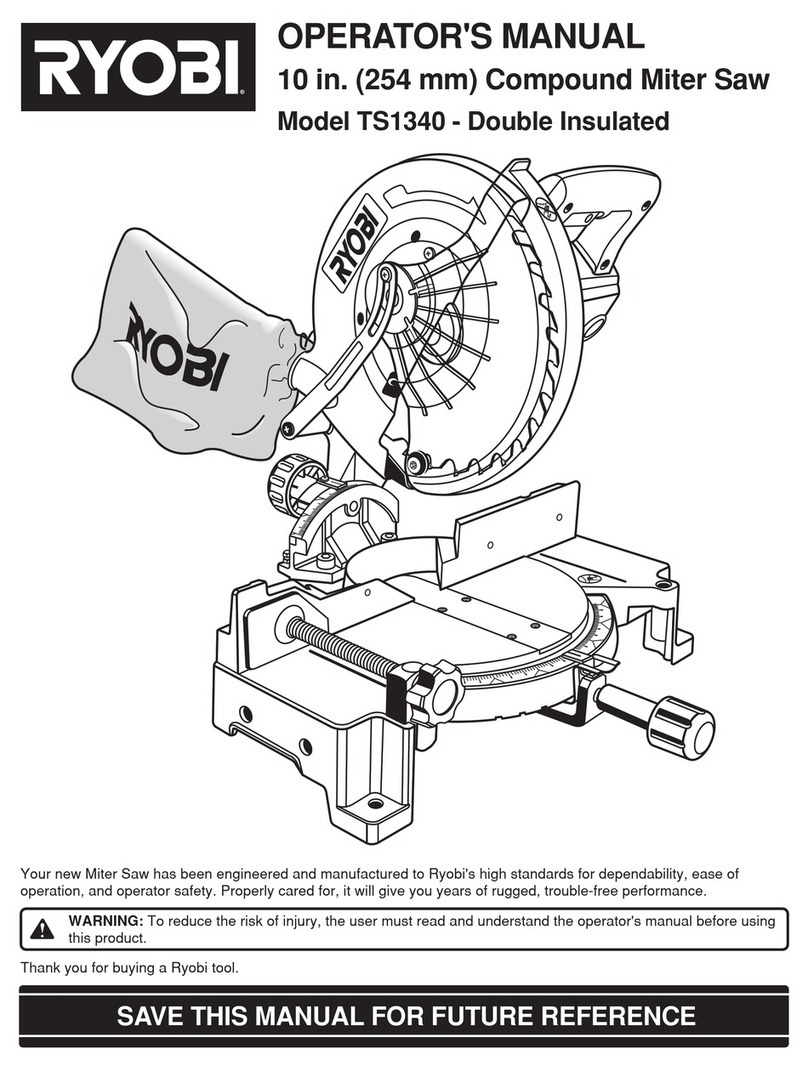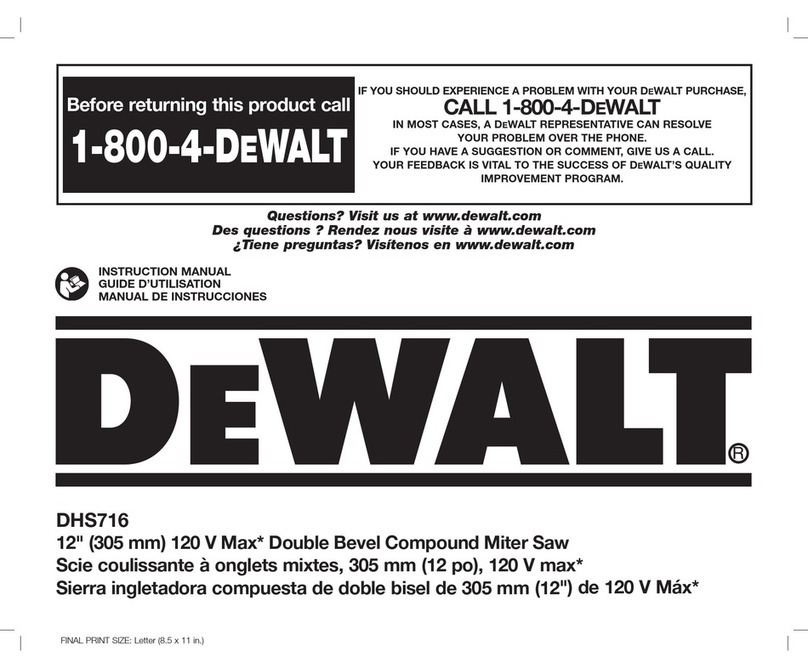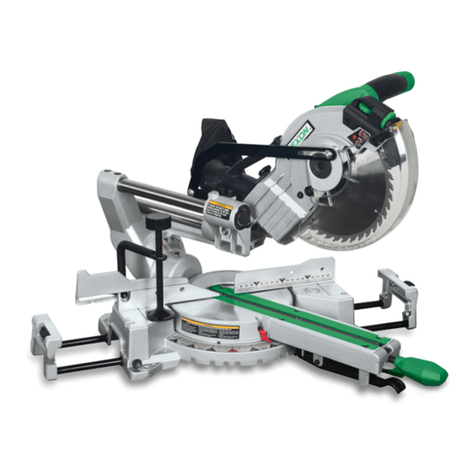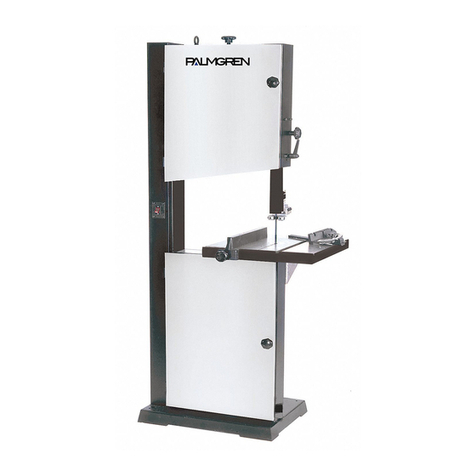F.F. Group CCS-20V PLUS User manual

CCS-20V PLUS
ORIGINAL INSTRUCTIONS
NOTICE ORIGINALE
ISTRUZIONI ORIGINALI
ORIGINALNO UPUTSTVO ZA RAD
EN
IT
EL
SR
RO
BG
CCS-20V PLUS

EN
IT
EL
SR
RO
BG
CORDLESS CIRCULAR SAW..................................................................................................................... 04
08
SEGA CIRCOLARE A BATTERIA............................................................................................................... 13
17
21
25
29
1
10
20
14
3
2
9
5
7
6
17
12 19
18
15
16
8
IMAGE 1
2

1
10 13
14
4
3
a
6
6
7
9
IMAGE 2
IMAGE 3
www.ffgroup-tools.com
3

4
IMAGE 4
IMAGE 5
e (450)
d (00)
15
11
7
9
16 8
6
c
c

www.ffgroup-tools.com
5
IMAGE 6
IMAGE 7
b
f
14
20
12
19

| English6
Read all safety warnings and all instructions. Failure
to follow the warnings and instructions may result in
-
ings and instructions for future reference. The term
“power tool” in the warnings refers to your mains-op-
erated (corded) power tool or battery-operated (cord-
less) power tool.
WORK AREA
Keep work area clean and well lit. Cluttered or dark ar-
-
-
mable liquids, gases or dust. Power tools create sparks
which may ignite the dust or fumes. Keep children and
-
tions can cause you to lose control.
and matching outlets will reduce risk of electric shock.
-
es, such as pipes, radiators, ranges and refrigerators.
There is an increased risk of electric shock if your body
is earthed or grounded.
Water entering a power tool will increase the risk of
electric shock.
-
ing, pulling or unplugging the power tool. Keep cord
-
tric shock.
-
sion cord suitable for outdoor use. Use of a cord suit-
able for outdoor use reduces the risk of electric shock.
-
of drugs, alcohol or medication. A moment of inatten-
tion while operating power tools may result in serious
non-skid safety shoes, hard hat, or hearing protection
used for appropriate conditions will reduce personal
accidents.
the power tool on. A wrench or a key left attached to a
rotating part of the power tool may result in personal
at all times. This enables better control of the power
-
connected and properly used. Use of dust collection
can reduce dust-related hazards.
POWER TOOL USE AND CARE
tool for your application. The correct power tool will
designed.
with the switch is dangerous and must be repaired.
the battery pack from the power tool before making
the risk of starting the power tool accidentally.
do not allow persons unfamiliar with the power tool or
these instructions to operate the power tool. Power
tools are dangerous in the hands of untrained users.
Maintain power tools. Check for misalignment or bind-
Many accidents are caused by poorly maintained pow-
er tools.
Keep cutting tools sharp and clean. Properly main-
tained cutting tools with sharp cutting edges are less
likely to bind and are easier to control.
Use the power tool, accessories and tool bits etc. in ac-
cordance with these instructions, taking into account
the working conditions and the work to be performed.
those intended could result in a hazardous situation.
-
ufacturer. A charger that is suitable for one type of
another battery pack.
-
tery packs. Use of any other battery packs may create
When battery pack is not in use, keep it away from
-
-
may cause irritation or burns.
English

English | 7
www.ffgroup-tools.com
SERVICE
person using only identical replacement parts. This will
ensure that the safety of the power tool is maintained.
CUTTING PROCEDURES
DANGER: Keep hands away from cutting area and
or motor housing. If both hands are holding the saw,
they cannot be cut by the blade.
cannot protect you from the blade below the work-
piece.
-
is important to support the work properly to minimize
Hold the power tool by insulated gripping surfaces
only, when performing an operation where the cut-
ting tool may contact hidden wiring or its own cord.
-
-
erator an electric shock.
When ripping, always use a rip fence or straight edge
the chance of blade binding.
Always use blades with correct size and shape (dia-
not match the mounting hardware of the saw will run
eccentrically, causing loss of control.
bolt. The blade washers and bolt were specially de-
signed for your saw, for optimum performance and
safety of operation.
Kickback causes and related warnings
Kickback is a sudden reaction to a pinched, bound or
misaligned saw blade, causing an uncontrolled saw to
lift up and out of the workpiece toward the operator;
When the blade is pinched or bound tightly by the
kerf closing down, the blade stalls and the motor
-
erator;
If the blade becomes twisted or misaligned in the
cut, the teeth at the back edge of the blade can dig
into the top surface of the wood causing the blade
or incorrect operating procedures or conditions and
below.
position your arms to resist kickback forces. Position
your body to either side of the blade, but not in line
backwards, but kickback forces can be controlled by
the operator, if proper precautions are taken.
When blade is binding, or when interrupting a cut
for any reason, release the trigger and hold the saw
motionless in the material until the blade comes to a
the work or pull the saw backward while the blade is in
-
When restarting a saw in the workpiece, center the
saw blade in the kerf and check that saw teeth are not
engaged into the material. If saw blade is binding, it
may walk up or kickback from the workpiece as the
saw is restarted.
panel on both sides, near the line of cut and near the
edge of the panel.
improperly set blades produce narrow kerf causing
shifts while cutting, it may cause binding and kickback.
other blind areas. The protruding blade may cut ob-
Check lower guard for proper closing before each use.
-
er guard into the open position. If saw is accidentally
dropped, lower guard may be bent. Raise the lower
guard with the retracting handle and make sure it
-
er part, in all angles and depths of cut.
Check the operation of the lower guard spring. If the
guard and the spring are not operating properly, they
-
ate sluggishly due to damaged parts, gummy depos-
its, or a build-up of debris.
The lower guard may be retracted manually only for
special cuts such as “plunge cuts and angle cuts”. Raise
the lower guard by retracting the handle and as soon
as the blade enters the material, release the lower
guard. For all other sawing operations, the lower
guard should operate automatically.
blade before placing saw down on bench or floor.
An unprotected, coasting blade will cause the saw
aware of the time it takes for the blade to stop after
switch is released.
TERIES
1.
a.
b.
c.
2.
a.
before it is scrapped.
b. The appliance must be disconnected from the sup-
c. The battery is to be disposed of safely.
d.
e.

| English8
to potentially harmful materials may occur.
f. 2
g.
may degrade at high temperatures.
h. The battery must be charged by a constant current,
i.
battery.
-
k.
less. Allow it to "normalise" at room temperature
l.
for recycling separately to the product, which is
Make sure the power supply information on the ma-
chine's rating plate are compatible with the power
supply you intend to connect it to.
This appliance is Class II* and is designed for connec-
tion to a power supply matching that detailed on the
-
patible lead rated for this appliance. Follow all the in-
: This product requires no earth
connection as supplementary insulation is applied
to the basic insulation to protect against electric
As a substance under normal conditions of use it is
drains.
Composition of lithium-manganese, lithium-cobalt and
-
aqueous liquid).
-
INTENDED USE
The cordless handheld circular saw is designed for
sawing straight cuts in wood, wood-type materials
and plastics. In the case of plastic workpieces, be care-
the plastic. The equipment is to be used only for its
prescribed purpose. Any other use is deemed to be a
case of misuse. Please note that our equipment has
not been designed for use in commercial, trade or in-
dustrial applications.
1. Handle
2.
3.
4.
5.
6.
7.
8.
9.
Additional handle
11.
12.
13.
14.
15.
16. Parallel stop
17.
Article number 41319
Model CCS-20V PLUS
Motor power supply
Idling speed min-1
mm 48
mm 33
ø mm
ø mm
mm 1,6
Weight Kg
Protection class
Sound emission values determined according to
EN 60745-1
79,2
Uncertainty K 3
Wear hearing protection!
Vibration total values ah(triax vector sum)
and uncertainty K determined according to EN
60745-1
Vibration Level:
Handle:
ah21,29
K21,5
ah2
K21,5

English | 9
www.ffgroup-tools.com
18. Flange
19.
Warning!
-
(image 2)
Release the handle on the rear of the guard hood for
(4).
Place the saw foot (6)-
piece you wish to saw. Raise the saw until the saw
blade (12) is at the required cutting depth (a).
(4). Check the handle is securely fastened.
MITER STOP (image 5)
The preset standard angle between the saw foot (6)
and saw blade (12)
carry out angled cuts.
(7) on the
front of the saw foot.
Keep an eye on the cutting angle scale (9) as you do
so.
(7). Check
the handle is securely fastened.
(image 2)
(14) of your circular saw
-
are that you will protect both the equipment and your
safer.
Important! -
traction work must be suitable for the workpiece
material.
Check that all the parts are properly connected.
image
The parallel stop (16) enables you to saw parallel lines.
(8) on
the saw foot (6).
To assemble, slide the parallel stop (16) into the guide
(c) on the saw foot (6).
screw (8) again.
Using the parallel stop: Position the parallel stop (16)
image
Using the line guide (15)
following cutting lines marked on the workpiece. Use
the mark (d)
mark (e)
image
1. (b) from the handle,
pressing the pushlock buttons (f) downwards to
do so.
2.
marked on the rating plate of the battery char-
ger. Insert the power plug of the charger into the
mains socket outlet.
3. Push the battery pack onto the battery charger.
If the battery pack fails to become charged, please
check:
Whether there is proper contact at the charging
contacts on the charger.
If the battery still fails to become charged, please re-
turn:
The charger
The battery pack
Use the battery charge status indicator to plan your
light up.
OPERATION
The swing guard hood (19) is pushed back automati-
cally by the workpiece.
The waste piece should be on the right-hand side of
the circular saw so that the wide section of the sup-
port bench supports its full area.
If you are sawing down a line that has been drawn,
guide the circular saw along the corresponding notch.
The saw blade must not be decelerated by hand or by
applying lateral pressure to the blade.
return
to its initial position after the operation has been
completed.
of the swing guard hood with the mains plug discon-
nected.
(14)
connected.
the retracted guard hood when the saw is in use.
a saw blade.
LED battery status
indicator Capacity

| English
saw. The saw blade must not be in contact with the
workpiece.
image 1
To switch on:
Press the locking button (3)
(2) at the same time
Allow the saw blade to accelerate until it reaches
saw blade as you do so.
If you release the handle the equipment will shut
down automatically which means that it cannot op-
erate accidentally.
-
tion openings whilst working with the tool.
saw blade has reached a complete standstill.
image
WARNING!
Use the saw blade key (13) which is stored in the hous-
ing, to change the saw blade.
Important. The hand-held circular saw must not be
operated with the saw blade key (13) inserted in it.
Press the spindle lock (11).
Undo the screw to secure the saw blade (17) using
the saw blade key (13).
(19)(20).
(18) and the saw blade (12) in a
downwards direction.
attention to the running direction (see arrow on the
guard hood and saw blade).
mm
(18)
-
rectly positioned)
mm
(18) on the blade with the raised side
-
rectly positioned)
WARNING!
center the blade. Therefore, pay special attention to
-
ly positioned in the blade.
Tighten the screw to secure the saw blade (17),
check it runs true.
parts run smoothly and the clamping screws are
tightened securely.
image 1
(5) can be used in poor lighting condi-
tions to additionally illuminate the cutting position.
(5) will come on automatically as soon
(3).
CLEANING
-
ing free of dirt and dust as far as possible. Wipe the
equipment with a clean cloth or blow it with com-
pressed air at low pressure.
-
Clean the equipment regularly with a moist cloth
MAINTENANCE
There are no parts inside the equipment which re-
quire additional maintenance.
ENVIRONMENTAL PROTECTION
Recycle raw materials instead of disposing as
waste. Machine, accessories and packaging
recycling. The plastic components are la-
beled for categorized recycling.
rain.
Wear eye protection.
mask is not worn.
protection is not worn.
must read and understand this manual
before using this product.
Important!

Français | 11
www.ffgroup-tools.com
GUARANTEE
This product is warranted in accordance with the le-
case of a claim, please send the machine, completely
electric power tools.
We declare under our sole responsibility that this
product is in conformity with the following standards
RAUX POUR L’OUTIL
SÉCURITÉ DE LA ZONE DE TRAVAIL
accidents.
de liquides inflammables, de gaz ou de poussières.
SÉCURITÉ DES PERSONNES

| Français12
-
personnes.
-
-
masser ou de le porter. Porter les outils en ayant le
-
cidents.
-
personnes.
-
-
-
-
UTILISATION ET ENTRETIEN DE L’OUTIL
-
construit.
-
-
enfants et ne pas permettre à des personnes ne
-
tretenus.
sont moins susceptibles de bloquer et sont plus fa-
-
dangereuses.
UTILISATION ET EMPLOI SOIGNEUX DES APPA
Ne chargez les accumulateurs que dans des char-
-
-
quer des brûlures ou un incendie.
-
-
irritations de la peau ou causer des brûlures.
MAINTENANCE ET ENTRETIEN
utilisant uniquement des pièces de rechange iden-
maintenue.
INSTRUCTIONS DE SÉCURITÉ POUR SCIES
CIRCULAIRES
PROCÉDURES DE COUPE
DANGER:

Français | 13
www.ffgroup-tools.com
lame.
pièces de montage de la scie ne tournent pas rond et
-
scie, afin de garantir une performance optimale et une
Causes du recul et mises en garde correspondantes
-
par le fond du trait de scie, la lame se bloque et le
-
rateur;
-
-
interrompue pour quelque raison que ce soit, relâchez
le bouton de commande et maintenez la scie immo-
que le recul peut se produire. Recherchez et prenez
ne se grippe.
-
en sortir lorsque la scie est remise en fonctionnement.
afin de minimiser les risques de pincement de la lame
-
de coupe et près du bord du panneau.
un grippage de la lame et un recul.
-
page et un recul.
-
-
profondeurs de coupe.
-
-
-
-
certaines coupes particulières, notamment les «coupes
-
-
-
-
TERIES
1.
a.
b.
c. Ne pas charger des batteries non rechargeables.
2. BATTERIE
a.
b.
lors du retrait de la batterie.
c.
d. Ne pas utiliser de batteries non rechargeables.
e. -
peut se produire.
f.
2.

| Français14
g.
-
h. -
i.
k.
-
changement.
l.
-
-
-
-
Composition de lithium-manganèse, de lithium-cobalt
-
UTILISATION PRÉVUE
-
sionnel ni industriel.
1.
2.
3.
4.
de coupe
5.
6.
7.
8.
9.
11.
Art N° 41319
Modèle CCS-20V PLUS
Alimentation en tension
du moteur
min-1
mm 48
mm 33
ø mm
ø mm
scie mm 1,6
Poids Kg
Classe de protection
la norme EN 60745-1
acoustique 79,2
-
tique
Incertitude K 3
Portez une protection acoustique!
Valeurs totales des vibrations ah(somme vecto-
rielle des trois axes directionnels) et incertitude
Niveau de vibration:
ah21,29
K21,5
ah2
K21,5

Français | 15
www.ffgroup-tools.com
12.
13.
14.
15.
16.
17.
18.
19. Protection basculante
AVANT D’ALLUMER LA SCIE
Avertissement!
(image 2)
-
(4).
Mettre la semelle (6) bien à plat sur la surface de la
scie (12) atteigne la profondeur de coupe requise (a).
coupe (4)
BUTÉE D’ANGLE (image 5)
(6) et la
lame (12)
(7)
-
(9) en le faisant.
(7)
EXTRACTION DE LA POUSSIÈRE ET DES COPEAUX
(image 2)
(14)-
-
Important! -
la pièce.
image
(16)
façon parallèle.
(8)(6).
(16) dans le guide (c) de la semelle de la scie (6).
-
cage (8).
(16) à plat sur le bord de la
image
(15)
(d)
(e) cor-
image
1. Retirer la batterie (b)
sur le bouton-poussoir (f).
2.
-
geur de la batterie. Mettre la prise du chargeur
dans la prise de courant.
3.
Que le courant circule dans la prise de courant
chargeur, touchent bien.
-
BATTERIE
UTILISATION
TRAVAILLER AVEC LA SCIE CIRCULAIRE PORTATIVE
(19) -
quement par la pièce.
-
-
porte toute sa surface.
la lame.
-
Indicateur de niveau de
charge de la batterie,

| Français16
-
tionne bien.
(14).
UTILISATION DE LA SCIE CIRCULAIRE
une lame de scie.
lame de scie ne doit pas toucher la pièce.
image 1
Pour allumer:
(3)
(2)
-
OFF
-
-
tionner accidentellement.
Ne pas ralentir la lame de scie en appuyant dessus
image
AVERTISSEMENT!
(13)
Important.
(13)
sur la scie circulaire.
(11).
(17) à
(13).
(19)-
lant (20).
Retirer la bride (18) et la lame de scie (12)
bas.
capot de protection et la lame de scie).
mm:
Mettre la bride (18)
-
rectement mise)
mm:
Mettre la bride (18)
correctement mise)
AVERTISSEMENT!
faire particulièrement attention à ce que la partie su-
(17)-
-
que les pièces mobiles tournent sans problème, et
image
(5) -
(5)-
(3).
basse pression.
MAINTENANCE
-
RÉPARATIONS
-
danger.
PROTECTION ENVIRONNEMENTALE
Recycler les matières premières au lieu de les
-
-

Italiano | 17
www.ffgroup-tools.com
GARANTIE
Tout dommage attribuable à une usure normale, à une
Porter des lunettes de protection.
Porter des gants de protection
sures, l'utilisateur doit lire et assimiler
Important!
AVVERTENZE GENERALI DI PERICOLO PER
ELETTROUTENSILI
si riferisce ad utensili elettrici alimentati dalla rete (con
linea di allacciamento) ed ad utensili elettrici alimentati
a batteria (senza linea di allacciamento).
SICUREZZA DELL' AREA DI LAVORO
minata. Il disordine oppure zone della postazione di la-
getti al rischio di esplosioni nei quali si abbia presenza
producono scintille che possono far infiammare la pol-
Tenere lontani i bambini ed altre persone durante
elettroutensile
SICUREZZA ELETTRICA
mente di apportare modifiche alla spina. Non im-
piegare spine adattatrici assieme ad elettroutensili
cate e le prese adatte allo scopo riducono il rischio
di scosse elettriche.
come tubi, riscaldamenti, cucine elettriche e frigorife-
momento in cui il corpo è messo a massa.
troutensile aumenta il rischio di una scossa elettrica.
particolare, non usarlo per trasportare o per appendere
spigoli taglienti e neppure a parti della macchina che
lettroutensile in ambiente umido, utilizzare un inter-
rezza riduce il rischio di una scossa elettrica.
SICUREZZA DELLE PERSONE
È importante concentrarsi su ciò che si sta facendo e
Italiano

| Italiano18
-
-
-
mento di protezione personale come la maschera per
di protezione oppure protezione acustica a seconda del
rischio di incidenti.
Prima di collegarlo alla rete di alimentazione elettrica
-
-
-
-
ogni situazione. In questo modo è possibile controllare
gioielli o capelli lunghi potranno impigliarsi in pezzi in
-
-
TRATTAMENTO ACCURATO ED USO CORRETTO
DEGLI ELETTROUTENSILI
-
-
Non utilizzare mai elettroutensili con interruttori difet-
-
Prima di procedere ad operazioni di regolazione sulla
macchina, prima di sostituire parti accessorie oppure
-
abituate ad usarlo o che non abbiano letto le presenti
istruzioni. Gli elettroutensili sono macchine pericolose
sufficiente esperienza.
-
-
pino e che non ci siano pezzi rotti o danneggiati al punto
-
manutenzione è stata effettuata poco accuratamente.
Mantenere gli utensili da taglio sempre affilati e puliti.
Gli utensili da taglio curati con particolare attenzione e
-
utensili per applicazioni specifiche ecc., sempre attenen-
dosi alle presenti istruzioni. Così facendo, tenere sempre
-
consentiti potrà dar luogo a situazioni di pericolo.
MANEGGIO ED IMPIEGO ACCURATO DI ACCUMU
LATORI
accumulatore, sussiste pericolo di incendio, se utilizza-
-
-
metallo di piccole dimensioni che potrebbero causare
-
ture o ad incendi.
In caso di impiego sbagliato, potranno insorgere fuori-
In caso di contatto casuale, sciacquare con acqua. Qua-
chiedere immediato consiglio al medico. Il liquido fuori-
-
nee o bruciature.
ASSISTENZA
da personale specializzato e solo impiegando pezzi di
-
CIRCOLARI
PROCEDURE DI TAGLIO
PERICOLO: -
oppure la carcassa del motore. Tenendo la sega con
Mai afferrare con le mani la parte inferiore del pezzo
-
razione la calotta di protezione non presenta alcuna
protezione contro la lama di taglio.
Adattare la profondità di taglio allo spessore del

Italiano | 19
www.ffgroup-tools.com
si intende tagliare e non appoggiarlo neppure sulla
-
porto stabile. Per ridurre al minimo possibile il perico-
lo di un contatto con il corpo, la possibilità di un blocco
della lama di taglio oppure la perdita del controllo, è
-
-
-
causando una scossa elettrica.
In caso di taglio longitudinale utilizzare sempre una bat-
tuta oppure una guida angolare diritta. In questo modo
è possibile migliorare la precisione del taglio riducendo
il pericolo che la lama di taglio possa incepparsi.
Utilizzare sempre lame per seghe che abbiano la mi-
sura corretta ed il foro di montaggio adatto (p. es. a
rombo oppure rotondo). In caso di lame per sega ina-
sarà perfettamente circolare e si crea il pericolo di una
perdita di controllo.
sega e sono state realizzate per raggiungere ottimali
prestazioni e massima sicurezza di utilizzo.
ad agganciamento, blocco oppure allineamento er-
-
cata nella fessura di taglio che si chiude, la stessa si
blocca e la forza motore spinge indietro la sega in
modo non corretto nel taglio, i denti del bordo po-
steriore della lama di taglio rimangono agganciati
la fuoriuscita della lama di taglio della fessura di ta-
-
guenza di un uso errato oppure non corretto della
-
re precauzionali come descritto di seguito.
Tenere la sega ben ferma afferrandola con entrambe
le mani e portare le braccia in una posizione che Vi per-
metta di controllare bene le forze di contraccolpi. Te-
nere sempre una posizione laterale rispetto alla lama
di taglio e mai mettere la lama di taglio in una linea con
il Vostro corpo. In caso di un contraccolpo la lama di
grado di controllare le forze di contraccolpo.
a quando la lama non si sarà fermata completamente.
-
blocco della lama di taglio.
fessura di taglio ed accertarsi che la dentatura della
-
zione. Una lama di taglio inceppata può balzare fuori
-
blocco di una lama di taglio, assicurare bene pannelli di
dimensioni maggiori. Pannelli di dimensioni maggiori
possono piegarsi sotto il peso proprio. In caso di pan-
nelli è necessario munirli di supporti adatti su entrambi i
deformate implicano un maggiore attrito nella fessura
di taglio aumentando il pericolo di blocchi e di contrac-
colpi della lama di taglio.
operazione di taglio si modificano le registrazioni è pos-
sibile che la lama di taglio si blocchi e che si abbia un
contraccolpo.
Procedere con particolare cautela effettuando tagli in
pareti esistenti oppure in altri settori che non possono
penetra in oggetti nascosti può bloccarsi e causare un
contraccolpo.
RIORE
calotta di protezione chiuda perfettamente. Non utiliz-
-
mente la calotta di protezione inferiore e non potesse
essere chiusa immediatamente. Mai bloccare oppure
legare la calotta di protezione inferiore in posizione
terra è possibile che la calotta di protezione inferiore
-
torno, aprire la calotta di protezione ed accertarsi che
altro pezzo.
Controllare il funzionamento della molla per la calotta
di protezione inferiore. Qualora la calotta di protezione
-
zione prima di utilizzarla. Componenti danneggiati,
depositi di sporcizia appiccicosi oppure accumuli di tru-
cioli comportano una riduzione della funzionalità della
calotta inferiore di protezione.
Aprire manualmente la cuffia di protezione inferiore
soltanto in caso di tagli particolari, ad esempio «tagli ad
immersione o dal pieno». Aprire la cuffia di protezione
-
-
zione. Per tutte le altre operazioni di taglio, la cuffia di

| Italiano
fornire protezione da scarica elettrica in caso di iso-
LITIO
Come sostanza in condizioni normali di utilizzo non è
considerata un pericolo per la salute. In caso di perdi-
ta accidentale, è necessario attenersi alle misure per
Composizione di litio-manganese, litio-cobalto e sali di
acquoso).
Prodotti di decomposizione pericolosi: Nessuno in
condizioni normali di utilizzo. In caso di perforazio-
idrogeno e monossido di carbonio.
DESTINAZIONE D’USO
eseguire tagli dritti su legno, materiali simili al legno
e materie plastiche. In caso di taglio su pezzi in plasti-
ca, fare attenzione a non far surriscaldare i denti della
-
cui è destinato. Qualsiasi altro utilizzo è considerato
-
parecchio non è stato progettato per essere usato in
applicazioni commerciali, artigianali o industriali.
DATI TECNICI
-
completamente la lama di taglio. Una lama di taglio non
protetta ed ancora in fase di arresto sposta la sega in
senso contrario a quello della direzione di taglio e taglia
tutto ciò che incontra. Tenere quindi sempre in conside-
razione la fase di arresto della sega.
ISTRUZIONI PER BATTERIE E CARICABAT
TERIA
1. CARICABATTERIA
a. Prima di caricare la batteria, leggere le istruzioni.
b. Per uso in ambienti interni. Non esporre a pioggia.
c. Non ricaricare batterie non ricaricabili.
2. BATTERIA
a. -
ria.
b.
c.
d. Non usare batterie non ricaricabili.
e. Non rompere, aprire o bruciare la batteria. Potrebbe
dannosi.
f. 2.
g.
h. Ricaricare la batteria con un trasformatore a corren-
te costante e tensione costante.
i. Ricaricare regolarmente la batteria, in condizioni
-
-
k.
-
sostituzione.
l.
della batteria per uno smaltimento separato dal
apparecchiature elettriche ed elettroniche. Isolare i
-
sione.
COLLEGAMENTO ALLA RETE ELETTRICA
Assicurarsi che le informazioni di alimentazione elet-
-
ca cui si intende collegarla. Questo apparecchio è di
Classe II* ed è progettato per essere collegato a una
rete elettrica corrispondente a quella indicata nella
dotazione. Nel caso in cui sia necessaria una prolunga,
con la prolunga.
: Questo prodotto non ri-
è stato applicato un isolamento supplementare per
Art nº 41319
Modello CCS-20V PLUS
Alimentazione di tensio-
ne del motore
min-1
mm 48
mm 33
ø mm
ø mm
mm 1,6
Peso Kg
Classe di sicurezza
Valori di emissione acustica rilevati conforme-
mente a EN 60745-1
ammonta normalmente a
acustica 79,2
Incertezza della misura K 3
Table of contents
Languages:
Other F.F. Group Saw manuals
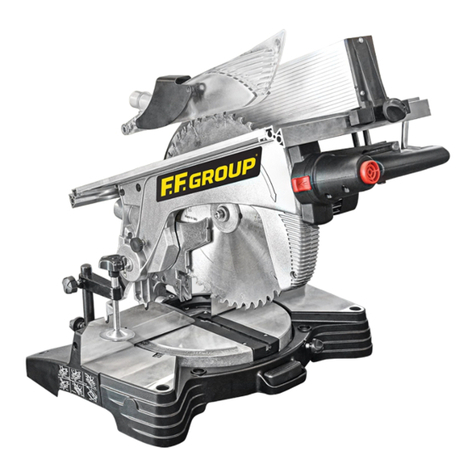
F.F. Group
F.F. Group TTMS 305i PRO User manual

F.F. Group
F.F. Group CS 14/2400 PRO User manual
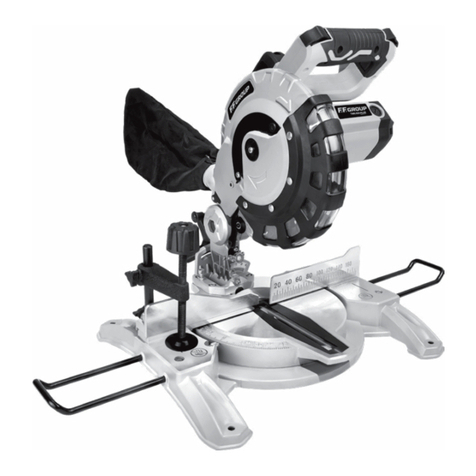
F.F. Group
F.F. Group TMS 210 PLUS User manual
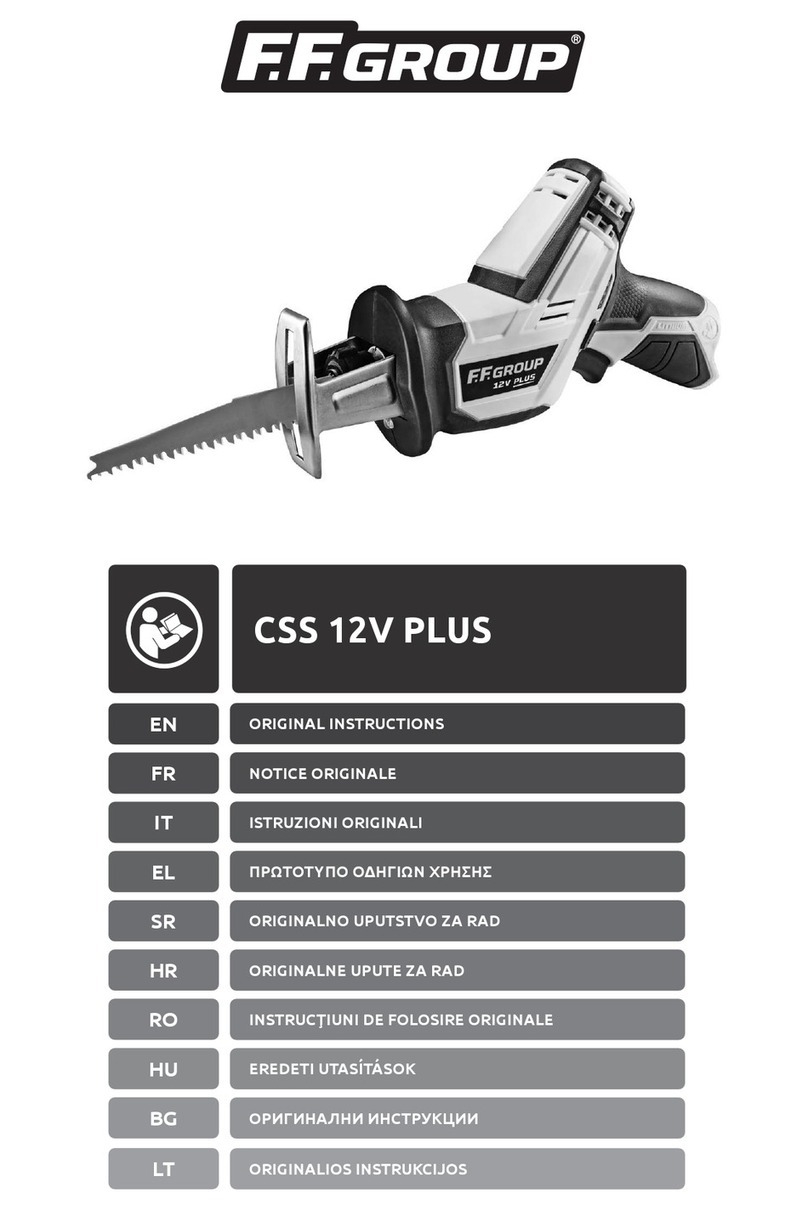
F.F. Group
F.F. Group CSS 12V PLUS User manual

F.F. Group
F.F. Group CRS-BL 20V PLUS User manual
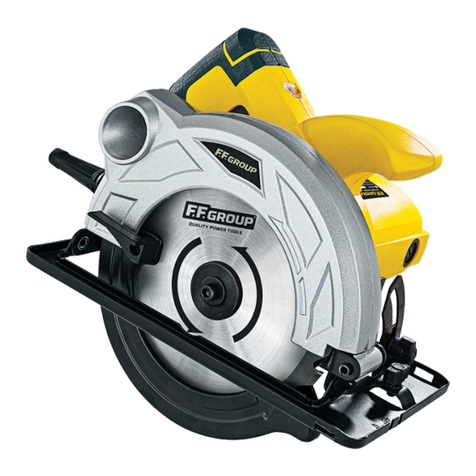
F.F. Group
F.F. Group CS 55/1200 PLUS User manual
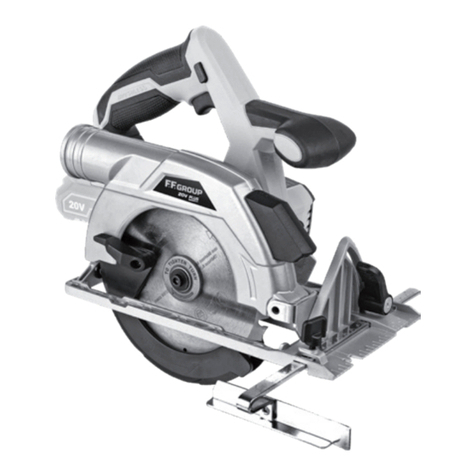
F.F. Group
F.F. Group CCS 165-BL 20V PLUS User manual
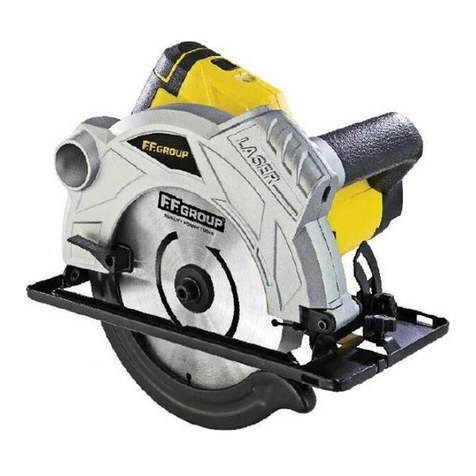
F.F. Group
F.F. Group CS 65/1500 PLUS User manual
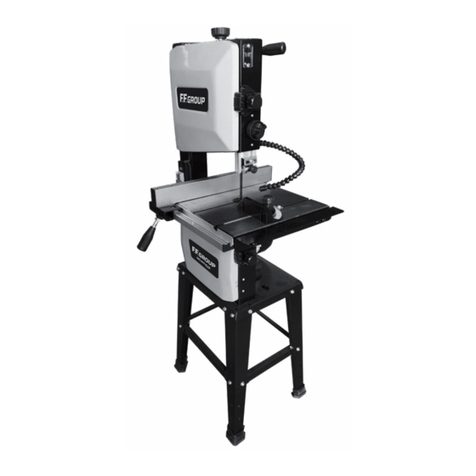
F.F. Group
F.F. Group BAS 240i PLUS User manual
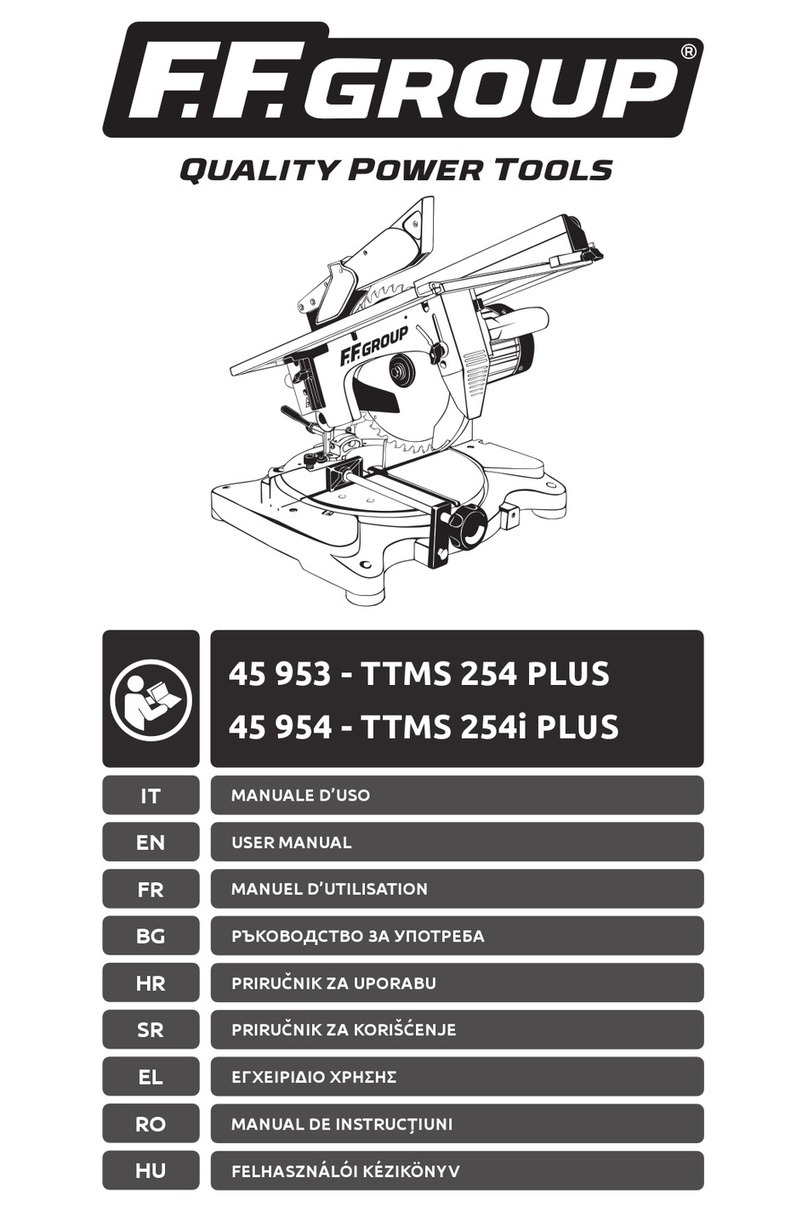
F.F. Group
F.F. Group TTMS 254 PLUS User manual
